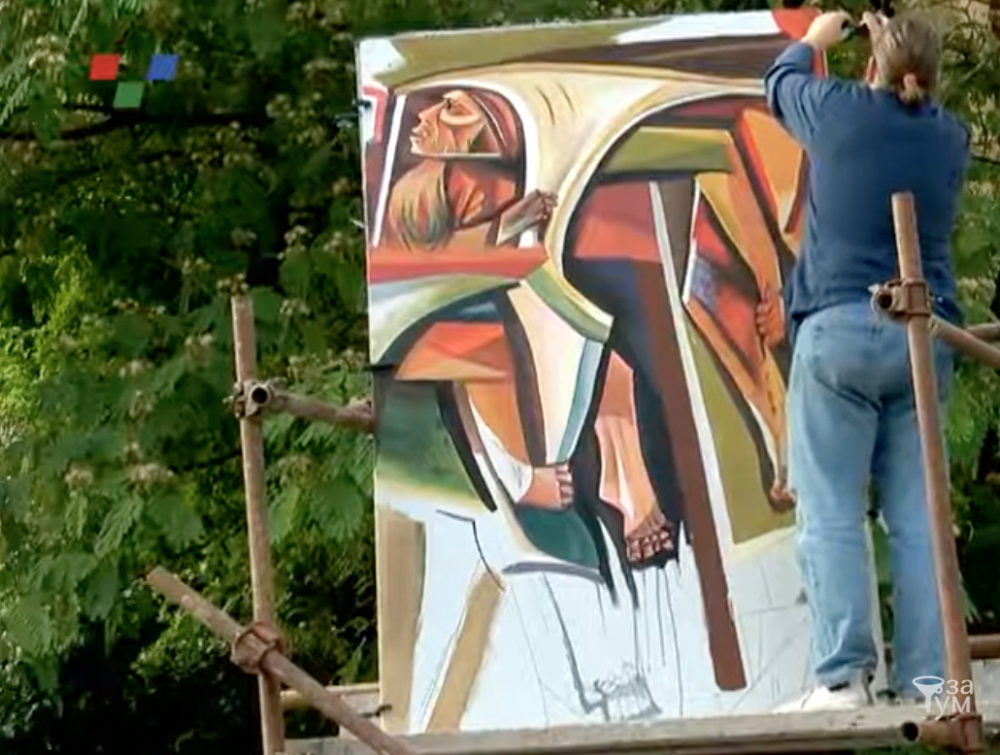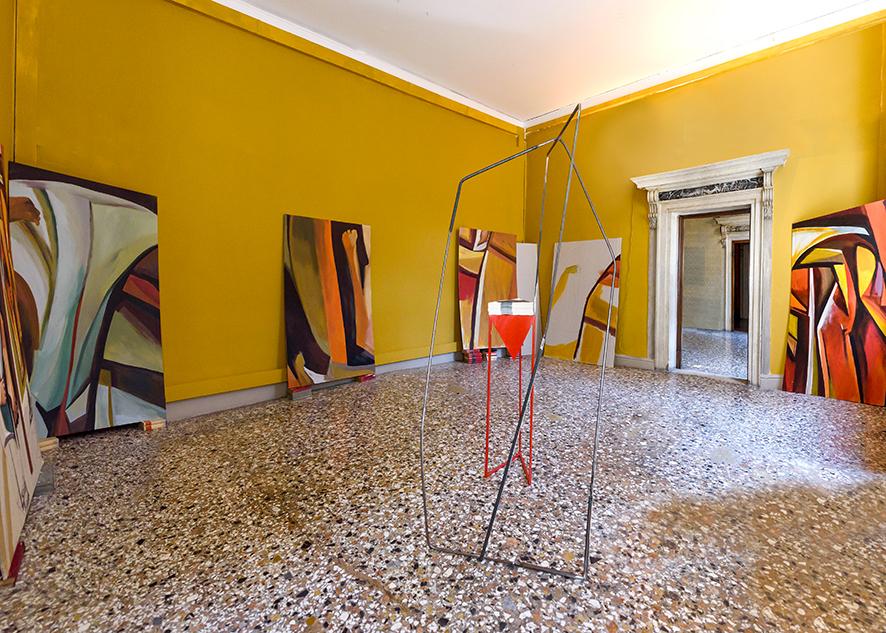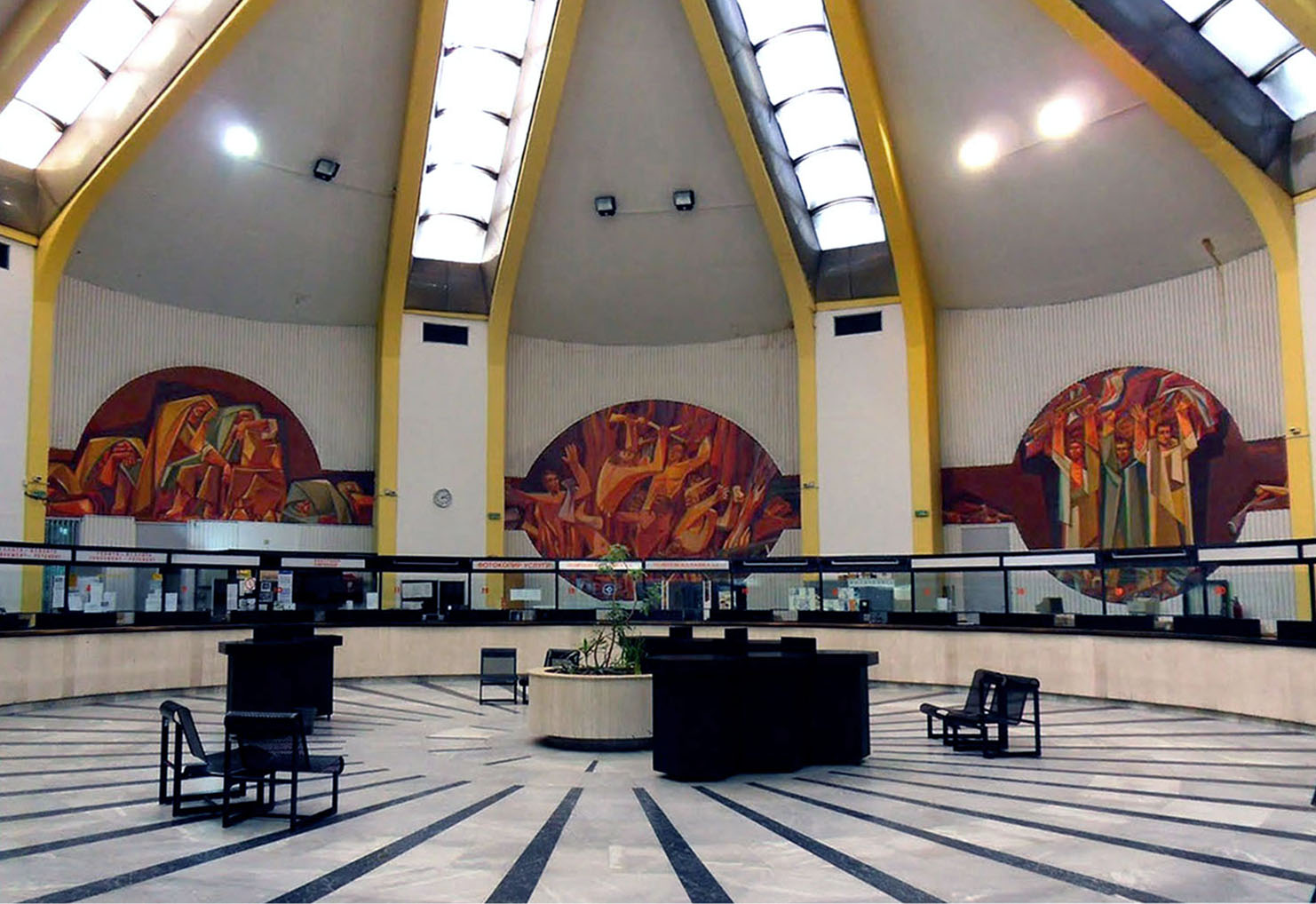When Skopje was destroyed by a devastating earthquake in 1963, ground-breaking Japanese architect Kenzo Tange was appointed to devise an entirely new masterplan for the city. Skopje became the first urban area that Tange and his experimental ‘Metabolist movement’ partially realised their radical approach to planning, which fused theories around organic biological growth with the design of architectural megastructures.

The new development included a series of fantastically bold, Brutalist buildings that were decorated with murals by the renowned Macedonian artist Borko Lazeski (1917 – 1993). The main Telecommunications building, known locally as ‘the Post Office’, was home to one of these murals. Called Epic for Freedom (1981), it was installed in the majestic central hall and consisted of a series of five oval paintings, each one five meters wide. Towering above human height, the works depicted figures painted in multiple shades of ochre, yellow, red, and brown in a modernist, post-Cubist style. Architectural fragments seem to shroud the figures, exposing limbs and anxious faces. Groups sit in respite huddled together, overwhelmed with exhaustion. A mother clasps her frantic, injured child. Are these figures escaping, hiding, or performing? It’s hard to tell. They are enigmatic, disturbing, and theatrical. It’s easy to see how this imagery could imprint itself on viewers over multiple viewings across the post office counter.
The murals played an important role in the childhood of artist Nada Prlja. She and her mother sent letters and packages to her brother, who was living in Sarajevo at the time:
The main hall of the Post Office was a place for a science fiction movie, a place where the future could start happening in real time, the space in which I imagined that my brother could magically be materialised and he could finally be here in Skopje, once again reunited with us.1In 2013, the Central Hall was destroyed by fire. It was a traumatic moment in the history of the city:
All the citizens of Skopje remember this fire. The building and the murals meant so much to us. It was a great sadness and a hard cut in our lives. 2In 2015 Prlja was invited by curator Ana Frangovska to participate in a public art project called Skopje Urban Stories. She chose to highlight Skopje’s great tradition of mural painting and bring the story of the murals to public prominence as an act of solidarity with Lazeski’s work and the city:
I decided to start repainting Lazevski’s lost murals, giving something back to the citizens of Skopje, by recreating a part of our shared, collective memory.3
Prlja made seven paintings on plasterboard, each one measuring 1×2 meters, and gave them a collective title of Department for Conservation and Restoration. They aren’t direct copies of Lazevski’s murals but rather a fluid interpretation of his works. Each one is painted at different scales (some are 1:1, others 1:5 and so on), and if brought together they would not form the original mural. The varying scales, and loose likeness of the originals is a way, says Prlja, of recognising the fragility of memory when attempting to reframe the past:
We can never go back to the original artwork – we can’t recreate what is passed.4
The paintings were installed in the public realm around the Telecommunications building, which remains sealed off, falling into a state of disrepair. There they established a direct, visceral relationship with the general public, many of whom immediately made the connection with the post office murals.

A few years later, the works were shown at the 58th Venice Biennale. The paintings were positioned on the floor of a handsome, decaying palazzo, leaning against walls that had only been partially painted for the exhibition. This unfinished aesthetic instilled in the audience a sense that things were in progress, that the artist might step in at any moment to finish the work, reflecting on the ever-changing, fluid nature of history and authorship.
Department for Conservation and Restoration unearths a complex layering of emotions for the people of Skopje, who have seen their city suffer a tumultuous series of events involving occupation and obliteration, and more recently, a move to the harsh realities of neo-liberalism. The role of art and destruction is inscribed into the lives and memories of all who live there.
